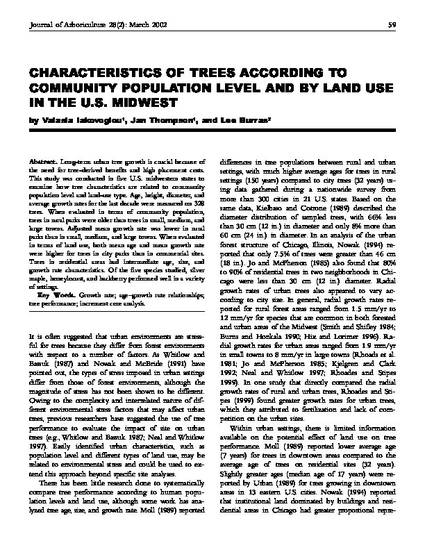
Long-term urban tree growth is crucial because of the need for tree-derived benefits and high placement costs. This study was conducted in five U.S. midwestern states to examine how tree characteristics are related to community population level and land-use type. Age, height, diameter, and average growth rates for the last decade were measured on 328 trees. When evaluated in terms of community population, trees in rural parks were older than trees in small, medium, and large towns. Adjusted mean growth rate was lower in rural parks than in small, medium, and large towns. When evaluated in terms of land use, both mean age and mean growth rate were higher for trees in city parks than in commercial sites. Trees in residential areas had intermediate age, size, and growth rate characteristics. Of the five species studied, silver maple, honeylocust, and hackberry performed well in a variety of settings.
Available at: http://works.bepress.com/c_burras/10/

This article is from Journal of Arboriculture, 28(2);2002; 59-69. Posted with permission.